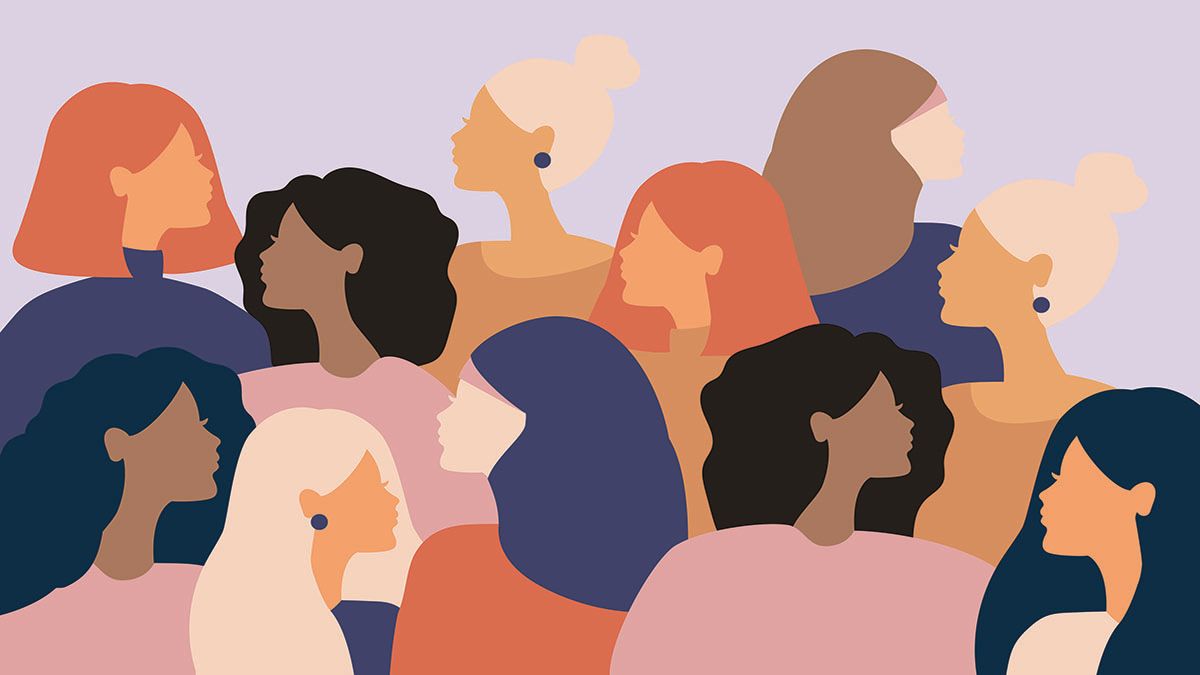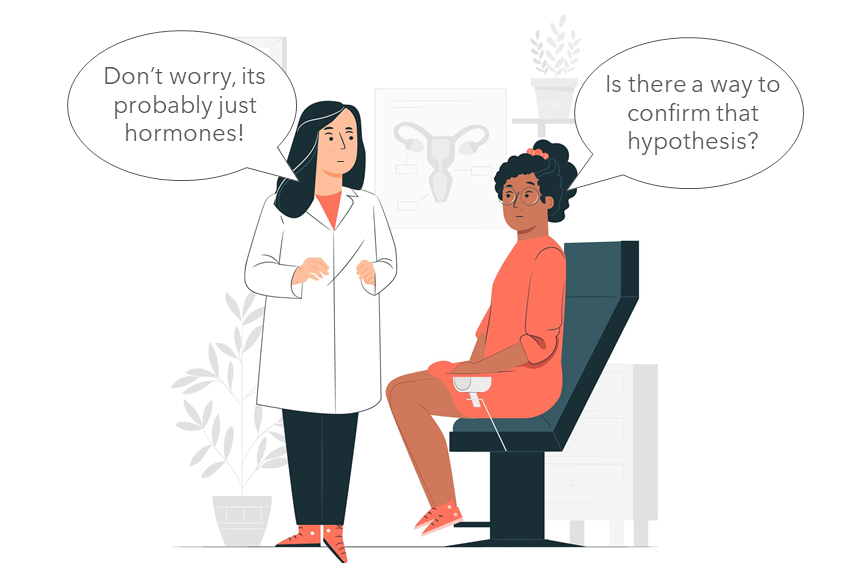How Healthcare Fails Half the Population: an Investigation of Gaps in Women’s Healthcare
How Healthcare Fails Half the Population: an Investigation of Gaps in Women’s Healthcare
Key points:
- Women’s health has been neglected for decades due to gender biases in medical research and healthcare providers
- To solve this, we need to reevaluate the way doctors are trained and emphasize widespread gender-specific treatment knowledge

The Problems
Though women make up half of the population, women’s healthcare has been woefully neglected for as long as modern medicine has existed.
As the Institute of Medicine recognizes, “every cell has a sex,” and sex-based differences influence all tissues and organs. In healthcare, these factors alter disease prevention, diagnoses, and treatments [10].
Of course, areas of health like maternal health, gynecology, menopause, and women’s oncology pertain specifically to women. However, more general health conditions are also connected to women’s health as they often affect women differently.
Women’s health also includes general health conditions for which sex differences are not precisely known or are not sufficiently studied, as is the case with Alzheimer’s disease. Scientists and physicians increasingly recognize that multiple diseases and conditions affect women differently than men [6].
Women’s healthcare gaps are causing deaths as well as a loss in economic productivity. These issues can be quantified. Women spend over a third of their lives in menopause, and it is estimated that 1.2 billion women globally will be in that life stage in 2030. Most women find that menopausal symptoms like hot flashes, night sweats, and sleep disturbances interfere with their lives, yet only a quarter obtain treatment. One study estimates nearly $1,400 in health costs and $770 in lost productivity per person per year for untreated hot flashes alone. Additionally, over 800 women die annually due to childbirth related complications. In the USA such deaths doubled between 2002 and 2018. The problem worsened rather than resolving over a decade, showing the dire need for novel healthcare solutions to meet women’s needs [9].
Lack of Gender Specific Research
Medicine is generally unknowledgeable about the different ways many illnesses impact women. The National Institute of Health only began mandating that women be included in clinical trials in 1993. This regulation does not apply to independent drug manufacturers. This has resulted in very tangible consequences. It was reported that 8 out of 10 prescription drugs were removed from the market between 1997 and 2000 due to gender specific dangers. For example, Fenfluramine, an appetite suppressant used between 1973–1997, created risks of valvular heart disease in women [10].
Many diseases affect women far more compared to men. 8% of the world has an autoimmune disease, and 78% of these individuals are women. Women are three times more likely to develop rheumatoid arthritis and four times more likely to have multiple sclerosis. Women are twice as likely to have a heart attack and are at least twice as likely to suffer chronic pain conditions. Lung cancer kills more women every year than breast, ovarian, and uterine cancers combined. Researchers have also found that sex hormones, particularly estrogen, influence the development and mortality of lung cancer [1].
Heart disease is another scenario in which sexism plays a large role in healthcare outcomes. Because heart attack research was led by men and most participants in studies were men, symptoms men experience are more likely to be identified. For example, the Harvard Physician’s Health study which began in 1982 that researched 22,000 men established the basis for using aspirin for heart attack prevention, something that holds true to this day. Women experiencing heart attacks nowadays are less likely to receive aspirin for treatment. Women less frequently experience the “classic” symptom of a heart attack, chest pain. Women are more likely to experience other symptoms like shortness of breath, nausea, vomiting, and back or jaw pain. The diagnosis method caters to men, causing women to be diagnosed with heart disease seven to ten years later than men, resulting in other chronic diseases by the time of the diagnosis [7].
Medical Gaslighting

The issue of lacking knowledge in women’s healthcare is exacerbated by healthcare providers gaslighting and refusing to believe women.
Women’s pain is constantly undermined by healthcare providers. 17% of women felt they were treated differently due to their sex, in comparison to 6% of men. Pain experienced by women is often neglected. 77 studies from high-income countries were analyzed and found many people reflect ideologies that women are used to internal pain, and pain with no external causes was “a natural characteristic of women’s bodies”. Women experiencing pain can be perceived as hysterical, emotional, or fabricating the pain altogether. A study this year investigating sex differences in evaluations of chest pain, a common symptom of heart attacks, found that in young adults visiting emergency rooms with the symptom women were less likely to “be triaged as emergent, to undergo electrocardiography, or be admitted to the hospital or observation unit” [5].
Women are also often not treated like autonomous beings in medical care. 18 states in America still allow healthcare providers to require a husband’s permission before offering tubal ligation. Most existing literature regarding autonomy in women’s healthcare regards reproductive health specifically. However, existing literature does find that women are often denied autonomy with respect to reproductive practices. In childbirth, the fetal-focused framework often prioritizes the child above the woman giving birth. Reducing fetal harm is the sole focus of giving birth. This pressures women into making certain decisions. For example, one consent form states “fetal monitoring by electronic machine is welcomed by the majority of mothers—any fears or questions?” Setting standards that persuade women to give up their personal preferences in favor of what is typically accepted is a problematic undermining of autonomy [4] [10].
How can we Solve These Issues?
Centering Female Issues in Education
Many people believe that female doctors need to make up more of the medical professional landscape. That effort needs to be implemented over time, and it can start with creating community-based programs to introduce young girls to medicine, which is a traditionally male dominated field. Since the career trajectory of doctors is quite long, it will take decades to create an equitable gender landscape in healthcare practice. Thus, it is important for current doctors to undergo implicit bias training. They need to confront their internalized beliefs and rectify them in order to provide equitable care to their clients.
As for the curriculum learned in medical school itself, gaps in medical training that equip doctors to meet women’s needs are clear. Less than 30 percent of medical schools provide education regarding gender-specific health needs and nine percent offer gender-specific elective courses. A study of 11 medical textbooks found that gender-specific information was scarce or absent. Doctors need to learn how to provide care to their patients to meet their needs [ 6].
Studies have found reasons for slow progress in medical schools to cover gender-based topics include uncertainty in the field of women's health, lacking guidelines for implementation, and institutional resistance to change. Increasing the scientific knowledge base on sex and gender differences will usher progress. Evidence-based data on gender differences will persuade medical schools to integrate this information into curriculum. Thus, it is important to fund novel studies in this field. Additionally, educational initiatives should develop educational models to help medical schools implement change.
We must make up for the negligence towards women in healthcare research and conduct remedial research to cover the knowledge gap. Economists widely predict that investment in women's healthcare would produce exponential ROIs due to the lack of products and services available right now.
FemTech: a New Frontier

In terms of technological advancements to meet women’s needs, FemTech is a promising frontier. “FemTech” is an area of technology-enabled solutions to women’s healthcare. The term was coined by Ida Tin, an entrepreneur, in 2016. Issues FemTech aims to address include maternal health, menstrual health, pelvic and sexual health, fertility, menopause, and contraception, and general health issues that affect women differently. FemTech has been rapidly gaining public awareness, company formation, and funding in recent years [6].
Various apps and services offer improved prescription delivery, user-friendly self-care options, improved diagnosis, and increased addressing of stigmatized health areas. For example, the Pill Club allows women to conveniently order birth control that is delivered to their homes. DotLab aids in endometriosis diagnosis, and Sera Prognostics helps diagnose preterm births. Additionally, FemTech creates spaces for care tailored towards intersectional identities pertaining to race and sexuality. The success of FemTech is predicted to disrupt the healthcare space overall by proving the necessity of female centered health solutions [8].
FemTech companies are also increasing the services they provide. For example, Peppy, a company aimed towards helping new mothers, now addresses issues pertaining to menopause.
McKinsey estimates FemTech’s market size to at least be half a billion dollars. Venture capital funding for FemTech has nearly tripled in the past five years from $600 million in 2015 to $1.9 billion in 2021 [2].
FemTech companies are already proving their value to investors. Progyny, which manages fertility benefits for employers, has quadrupled in value as it went public for $1 billion in 2019 and is now worth over 4 billion dollars. FemTech creates new opportunities for researchers, investors, and other players in the market. FemTech has also presented opportunities in other sectors. L’oreal, a leading cosmetics company, recently partnered with period tracking app Clue to investigate the effects of the menstrual cycle on skin health [6] [7].
As great of a solution as it is, FemTech does face certain challenges. As panic over Roe V Wade being overturned pervaded social media earlier this year, posts urged individuals in states where abortion was blocked to stop using period tracking apps. Users claimed data from these apps could be used to prove a woman had obtained an illegal abortion. There is truth to these claims. Due to loose regulations regarding data usage in FemTech, data collected is vulnerable to employers, government entities, and corporations. In 2021, Flo, a period tracking app, had a settlement with the FTC due to their sharing of sensitive user information with Facebook, Google, and other corporations. On an individual scale, FemTech products like fertility trackers that allow partners to participate could make women vulnerable to gender-based violence [9].
Additionally, the female-centered approach to FemTech can often exclude trans men and women. These technology solutions need to ensure intersectionality in their products.
FemTech is already filling the unmet women’s needs medicine causes. However, there are still many issues FemTech should address. This industry is rectifying much of the gender inequality we see in healthcare as it continues to thrive.
Citations
- SeemaHarichand-HerdtSuresh S.RamalingamPersonEnvelope, SeemaHarichand-Herdt, S.RamalingamPersonEnvelope, S., Lung cancer is the leading cause of cancer deaths in the United States. In recent years the incidence of lung cancer in men has been declining, Traynor, A. M., Marquez-Garban, D. C., Clark, G. M., Thatcher, N., Salomon, D. S., Cerfolio, R. J., Chang, J. W., Molina, J. R., Fu, J. B., Wakelee, H. A., Visbal, A. L., Johnson, B. E., Radzikowska, E., Minami, H., Ferguson, M. K., … Guo, N. L. (2009, December 6). Gender-associated differences in lung cancer: Clinical characteristics and treatment outcomes in women. Seminars in Oncology. Retrieved December 2, 2022, from https://www.sciencedirect.com/science/article/pii/S0093775409001894?casa_token=I3K_XW1Ue_8AAAAA%3AsqIxd6LpPDpzgZPnZn0RMl_TPmtIh21okoNZAqVKutQX_IxKLDdUKEZqNttVNWxh1kXqiy3Ieaw#sec5 https://www.thelancet.com/journals/lancet/article/PIIS0140-6736(19)30510-0/fulltext
- BerthaCoombs. (2022, March 21). Investors see growth opportunity in Femtech devoted to women's health. CNBC. Retrieved December 2, 2022, from https://www.cnbc.com/2022/03/21/investors-see-growth-opportunity-in-femtech-devoted-to-womens-health-.html
- The Femtech Revolution. The National Law Review. (n.d.). Retrieved December 2, 2022, from https://www.natlawreview.com/article/femtech-revolution
- The illusion of autonomy in women's medical decision-making. (n.d.). Retrieved December 3, 2022, from https://ir.law.fsu.edu/cgi/viewcontent.cgi?article=2507&context=lr
- "it's only in her head": Gaslighting in women's health | healthnews. (n.d.). Retrieved December 3, 2022, from https://healthnews.com/news/its-only-in-her-head-gaslighting-women-at-doctors-office/
- Kelly Burrowes Senior Researcher. (2022, September 13). Gender bias in medicine and medical research is still putting women's Health at Risk. The Conversation. Retrieved December 2, 2022, from https://theconversation.com/gender-bias-in-medicine-and-medical-research-is-still-putting-womens-health-at-risk-156495
- McKinsey & Company. (2022, August 20). Unlocking opportunities in women's Healthcare. McKinsey & Company. Retrieved December 2, 2022, from https://www.mckinsey.com/industries/healthcare-systems-and-services/our-insights/unlocking-opportunities-in-womens-healthcare
- McKinsey & Company. (2022, August 25). The dawn of the femtech revolution. McKinsey & Company. Retrieved December 2, 2022, from https://www.mckinsey.com/industries/healthcare-systems-and-services/our-insights/the-dawn-of-the-femtech-revolution
- Nayeri, F. (2021, April 7). Is 'Femtech' the next big thing in Health Care? The New York Times. Retrieved December 2, 2022, from https://www.nytimes.com/2021/04/07/health/femtech-women-health-care.html
- Osamor, P. E., & Grady, C. (2016, June 7). Women's autonomy in health care decision-making in developing countries: A synthesis of the literature. International journal of women's health. Retrieved December 2, 2022, from https://www.ncbi.nlm.nih.gov/pmc/articles/PMC4908934/
- Transforming Primary Health Care for women - part 1: A framework for addressing gaps and barriers. Transforming Primary Health Care for Women, Part 1: A Framework | Commonwealth Fund. (2020, July 16). Retrieved December 2, 2022, from https://www.commonwealthfund.org/publications/fund-reports/2020/jul/transforming-primary-health-care-women-part-1-framework Why many autistic girls are overlooked. Child Mind Institute. (2022, September 16). Retrieved December 2, 2022, from https://childmind.org/article/autistic-girls-overlooked-undiagnosed-autism/



